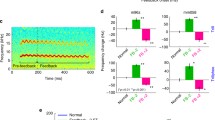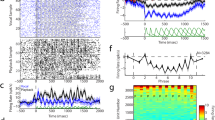Abstract
The perception of vowels was studied in chimpanzees and humans, using a reaction time task in which reaction times for discrimination of vowels were taken as an index of similarity between vowels. Vowels used were five synthetic and natural Japanese vowels and eight natural French vowels. The chimpanzees required long reaction times for discrimination of synthetic [i] from [u] and [e] from [o], that is, they need long latencies for discrimination between vowels based on differences in frequency of the second formant. A similar tendency was observed for discrimination of natural [i] from [u]. The human subject required long reaction times for discrimination between vowels along the first formant axis. These differences can be explained by differences in auditory sensitivity between the two species and the motor theory of speech perception. A vowel, which is pronounced by different speakers, has different acoustic properties. However, humans can perceive these speech sounds as the same vowel. The phenomenon of perceptual constancy in speech perception was studied in chimpanzees using natural vowels and a synthetic [o]- [a] continuum. The chimpanzees ignored the difference in the sex of the speakers and showed a capacity for vocal tract normalization.
Similar content being viewed by others
References
Chiba, T., and Kajiyama, M. (1941).The Vowel: Its Nature and Structure, Tokyo-Kaiseikan, Tokyo.
Elder, J. H. (1934). Auditory acuity of chimpanzee.J. Comp. Psychol. 17: 157–183.
Elder, J. H. (1935). The upper limit of hearing in chimpanzee.Am. J. Physiol. 112: 109–115.
Farrer, D. M., and Prim, N. M. (1965). A preliminary report on auditory frequency threshold comparisons of humans and pre-adolescent chimpanzees. Technical Report No. 65-6, 6571st Aeromedical Research Laboratory, Holloman Air Force Base, N.M.
Fujisaki, H., and Kawashima, T. (1968). The roles of pitch and higher formats in the perception of vowels.IEEE Trans. Audio Electroacoust. AU-16: 73–77.
Fukuda, Y., Sakamoto, Y., and Kuroki, S. (1976). Promotive effect of residual hearing upon speech reading.J. Acoust. Soc. Jpn. 32: 271–276.
Gardner, R. A., and Gardner, B. T. (1969). Teaching sign language to a chimpanzee.Science 165: 664–672.
Klatt, D. H. (1980). Software for a cascade/parallel formant synthesizer.J. Acoust. Soc. Am. 67: 971–995.
Kojima, S. (1986). Hearing, voice perception and vocal behavior in the chimpanzee.Transactions of the Committee on Speech Research/Hearing Research, Acoustical Society of Japan, S85-88/H-86-14.
Kojima, S. (1987). Hearing in a chimpanzee.Ann. Bull. RILP. 21: 69–73.
Kojima, S. (1988). Audition, speech perception and phonation of the chimpanzee: A search for the origin of human speech.Primate Res. 4: 44–65.
Kojima, S. (1989). A comparison of auditory functions in the chimpanzee and human.Folia primatol. (in press).
Kuhl, P. (1979). Speech perception in early infancy: perceptual constancy for spectrally dissimilar vowel categories.J. Acoust. Soc. Am. 66: 1668–1679.
Liberman, A., Cooper, F., Shankweiler, D., and Studdert-Kenedy, M. (1967). Perception of the speech code.Psychol. Rev. 74: 431–461.
Lieberman, P. (1968). Primate vocalizations and human linguistic ability.J. Acoust. Soc. Am. 44: 1574–1584.
Lieberman, P. (1975).On the Origins of Language: An Introduction to the Evolution of Human Speech, Macmillan, New York.
Lieberman, P. (1984).The Biology and Evolution of Language, Harvard University Press, Cambridge, Mass.
Lieberman, P. (1986). Some aspects of dimorphism and human speech.Hum. Evol. 1: 67–75.
Marler, P., and Tenaza, R. C. (1977). Signalling behaviour of apes with special reference to vocalizations. In Sebeok, T. E. (ed.),How Animals Communicate, Indiana University Press, Bloomington, pp. 965–1033.
Mohr, B., and Wang, W. S.-Y. (1968). Perceptual distance and the specification of phonological features.Phonetica 18: 31–45.
Peterson, G. E., and Barney, H. L. (1952). Control methods used in a study of the vowels.J. Acoust. Soc. Am. 24: 175–184.
Premack, D. (1976).Intelligence in Ape and Man, Lawrence Erlbaum Associates, Hillsdale, N.J..
Rumbaugh, D. (1977).Language Learning by a Chimpanzee, Academic Press, New York.
Snowdon, C. T., Brown, C. H., and Petersen, M. R. (1982).Primate Communication, Cambridge University Press, Cambridge.
Author information
Authors and Affiliations
Rights and permissions
About this article
Cite this article
Kojima, S., Kiritani, S. Vocal-auditory functions in the chimpanzee: Vowel perception. Int J Primatol 10, 199–213 (1989). https://doi.org/10.1007/BF02735200
Received:
Revised:
Issue Date:
DOI: https://doi.org/10.1007/BF02735200




